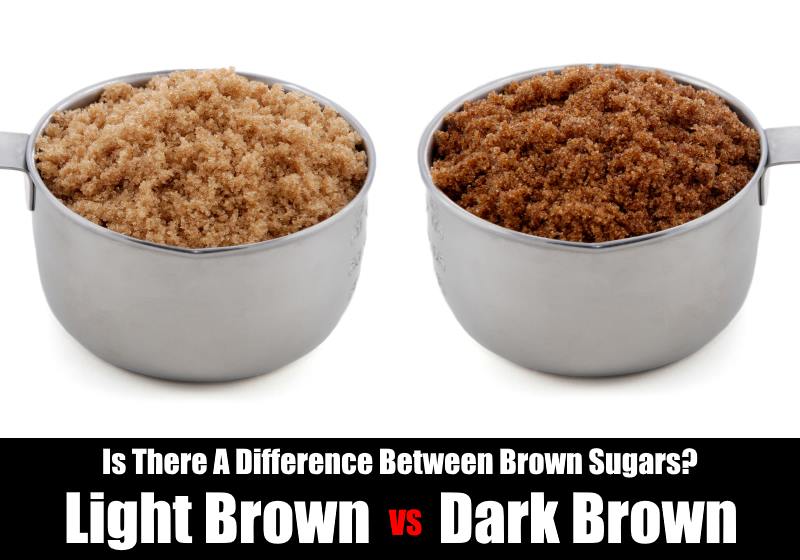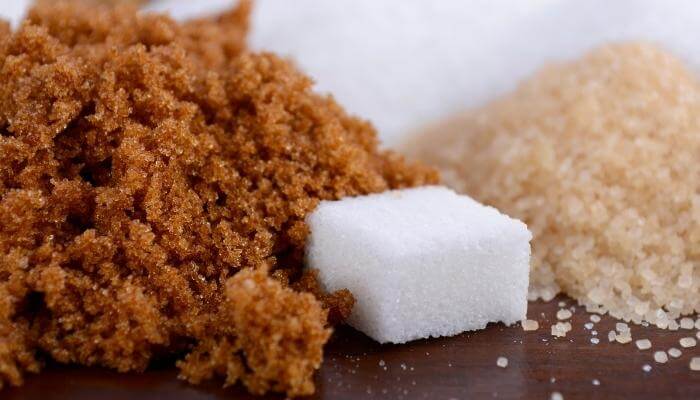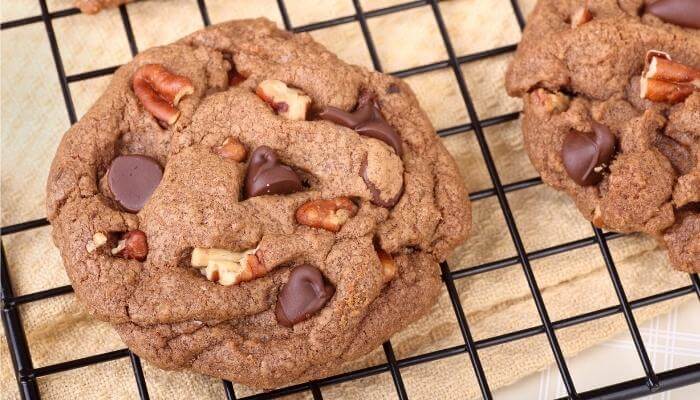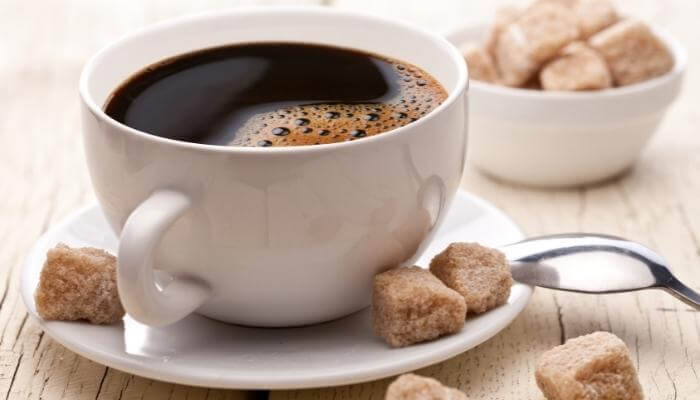There is a big difference between the types of brown sugar, and knowing what it is can help you use the right type of sugar in your cooking. So what is the difference between light and dark brown sugar?
The difference between light and dark brown sugar is their molasses content ratio. Light brown sugar has less molasses compared to dark brown sugar. Both sugars are derived from sugar cane, but the ratios of molasses result in different flavors, colors, and uses.

In this article, I will explain the difference between light and dark brown sugar and give tips on when to use each one.
What’s The Difference Between Light And Dark Brown Sugar?
Light and dark brown sugar are very similar but not the same. Both types of sugar are made by adding molasses to white sugars, where the amount added determines the sugar’s final color and flavor.
Light brown sugar has a lower amount of molasses added to it, resulting in a milder flavor and lighter color.

Dark brown sugar has more molasses added, giving it a deeper flavor and darker color. You’ll also notice that the extra molasses added makes it slightly moister than light brown sugar.
Both types of brown sugar should always be stored in airtight containers as they will quickly harden and degrade when exposed to the air.
What Is Brown Sugar?
Brown sugar is sugar that has molasses added to it. Molasses is a dark, thick syrup that is a by-product of the sugar refining process.
The molasses is added back into the sugar to give it flavor and color. The amount of molasses added also determines whether the brown sugar is classified as light or dark.
Both brown sugars are often sold at similar prices and always in sealed plastic bags to keep them moist and maintain their shelf life.
What Does Brown Sugar Do In Baking?
In baking, brown sugar is often used for two main reasons.

First, its molasses content gives baked goods a subtle but distinct flavor that white sugar cannot provide. This is why brown sugar is often used in recipes for cookies, cakes, and other baked goods where a little extra flavor is desired.
The second reason to use brown sugar in baking is its color. The molasses in brown sugar will impart a slight brown color to whatever it is used, which can be desirable in some recipes.
When To Use Light Or Dark Brown Sugar
Either type of brown sugar can be used interchangeably in most recipes. So, whether you prefer the flavor of light brown sugar or the color of dark brown sugar, you can use either one in your next baking adventure!
Which one should you use in your favorite recipe? That depends on what you’re making! Here are a few ideas.
Light brown sugar is regularly used in baking for its mild flavor and golden color. A few recipes that you might see light-brown sugar used in are:
- Chocolate chip cookies
- Brown sugar cookies
- Pound cakes
- Gram-based cheesecake crusts
- Ginger cookies
Dark brown sugar has a richer and darker flavor, making it perfect for recipes that call for a bolder flavor or darker color.
Because of its strong molasses flavor, dark brown sugar is also great for adding depth to sauces and glazes. You’ll find dark brown sugar used in:
- Caramel apple cake
- Warm pecan and pumpkin pie
- Brown sugar cookies
- Brown sugar granola
- Caramelized onion pastry tarts
But wait, brown sugar is not just used in baking!

The final boiling of cane sugar syrup results in blackstrap molasses, which is loaded with calcium, magnesium, potassium, and iron. These nutrients are also found at higher levels in brown sugar than in white sugar.
If you’re trying to cut back on processed foods but miss the sweetness, add a teaspoon full of dark brown sugar to teas or smoothies.
You’ll get the benefit of nutrients available in brown sugar, a burst of sweet flavor, and carbohydrates to keep you going.
Can Light Brown Sugar Be Substituted For Dark Brown Sugar?
Yes, you can substitute light brown for dark brown sugar in a one-to-one ratio. However, like all food substitutes, the final taste is not 100% perfect, but it’s pretty darn close.
If you happen to have a bit of molasses on hand, you could replace one cup of dark brown sugar with one cup of light brown sugar mixed with one tablespoon of molasses.
You may have to heat up your molasses if it’s too thick to mix with your sugar.
A grade B or dark maple syrup can be substituted in a real pinch for the molasses. There’s nothing worse than being ready to bake a batch of cookies on a cold night and realizing you’re out of brown sugar.
In most cases, when substituting the above, your guests will never know the difference.











